Need some inspiration on how to improve your organization’s sustainability efforts and create a better place for employees to work?
If you’re an advocate for sustainability, working in an office can probably seem pretty frustrating at times. Looking for some inspiration to bring to your organization? Check out how our friends at Mohawk, ROOM, and Skender are demonstrating exceptional integration and commitment to sustainability and social responsibility in their products, work, and culture. Make sure to leave a comment below about your sustainability efforts!
Mohawk Industries
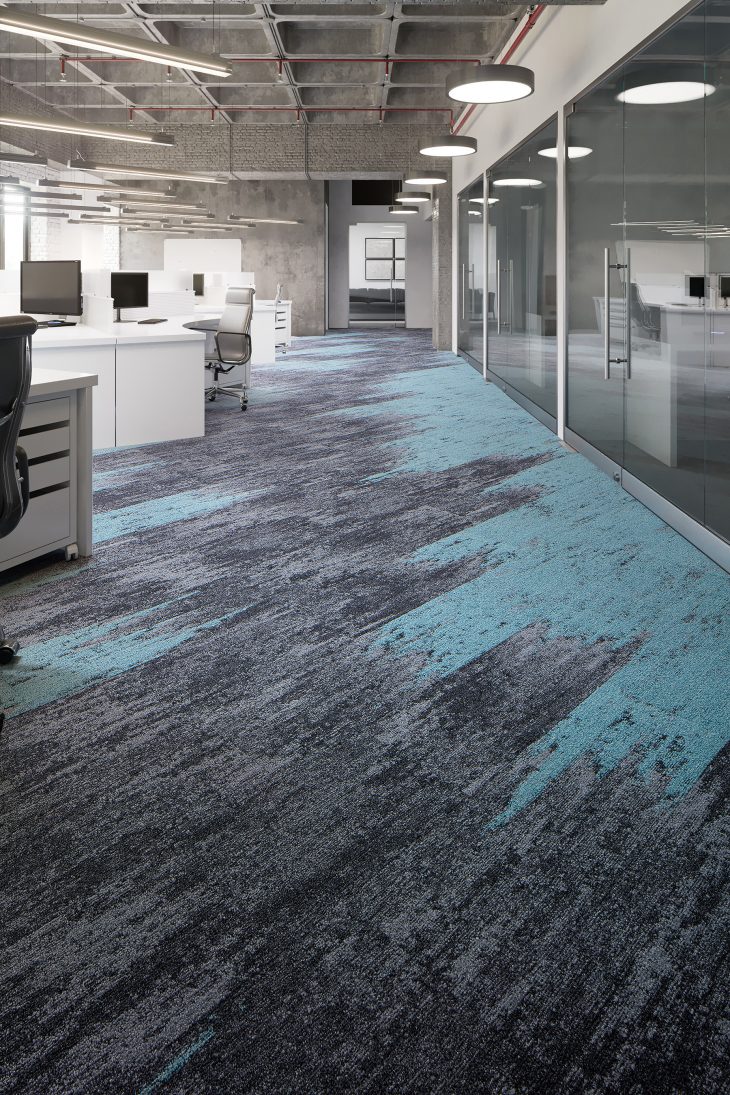
What do you think is the most significant contribution to your company’s sustainability efforts?
It is innovation —from products that take a holistic approach towards manufacturing, to buildings that are guided by frameworks that promote resource conservation and human wellbeing. For Mohawk Group, it’s about being innovative in our approach to manufacturing so that the social and environmental co-benefit through projects, for instance, like our Living Product Challenge Petal Certification water conservation strategies and SmartFlower collaboration with Groundswell. This is just one way that Mohawk has continued to extend our positive handprints (as opposed to environmental footprints) into the communities where we work, live and play.
How many of your efforts are driven by employee requests/demands?
We feel that our efforts are really driven more by employee response and customer demand. At our various Mohawk sites, sustainability gathers great response and interaction from the employees therein, which further fuels this commitment. With our customers, they are providing the demand when they actively look for products that either adhere to green certification standards and/or are just generally interested in specifying from environmentally conscious, socially responsible businesses.
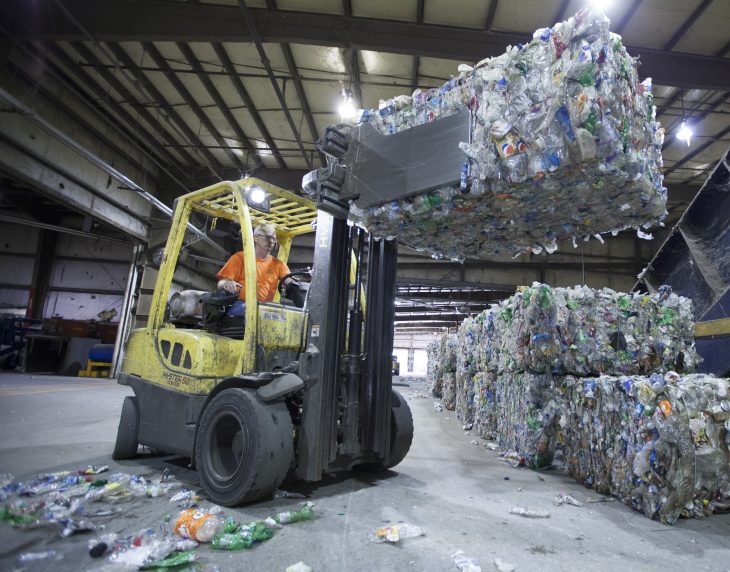
Do you measure the cost savings generated by environmentally appropriate solutions?
Measuring the financial impact of all initiatives is certainly an important component of creating a truly holistic sustainable program. Due to the diverse nature of initiatives that we implement, there are various pathways to measure cost savings. Our energy team implements several initiatives in our manufacturing operations that result in savings in utilities, while also reducing our emissions and improving efficiency. Additionally, we have implemented several projects outside of our company’s ownership that is community-based and will result in water and energy savings for the respective organizations. The cost savings in this instance would be more indirect to Mohawk specifically, but very much impactful to our community partners.
What do you think is the greatest benefit that your company receives because of the adoption of increased sustainability solutions?
One of the greatest benefits to continuing along our “Believe in Better” journey is our improved customer and employee satisfaction and relationship. We always try to communicate and help them understand how their work or whatever they specify encompasses responsible business practices. We work to demonstrate that it directly correlates with and connects back to the handprints we are always trying to deliver into our local and global communities through our corporate sponsorships and Mohawk-initiated community-enriching projects that benefit schools with STEM programs and underserved groups.
What sustainable practices does your company participate in, in relation to overall community efforts?
For Mohawk Group, we believe a global company equals a global community. We are providing savings through energy and water to regions that otherwise would not experience the cost relief. Mohawk’s holistic approach to manufacturing helps to minimize waste, water use, transportation, and potential health impacts. Our parent company, Mohawk Industries, is the largest recycler of plastic bottles in North America. A total of 48 Mohawk facilities throughout the U.S. and Europe are zero waste to landfill (ZLF). We also include in our corporate social responsibility strategy our ongoing commitments to and relationships with organizations including United Way and Susan G. Komen, where we connect at the local and national levels. Mohawk has also extended the opportunity to associates at our facilities in the U.S. and Mexico to participate in health and wellness programs to build a healthier internal community, together with their families through programs like our on-site Healthy Life Centers.
ROOM
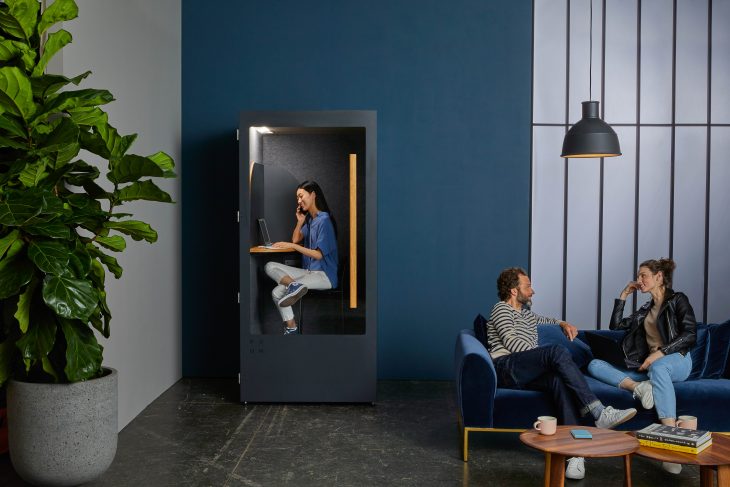
What do you think is the most significant contribution to your company’s sustainability efforts?
Our design ethos is rooted in sustainability. Every minute, one million plastic bottles are thrown away around the world, which comes at a great expense to our environment. At ROOM, we believe that there’s a better place for your empty Evian than a landfill, which is why we engineered our soundproofing materials with recycled plastic bottles. Each one of our flagship phone booths is engineered with over 1,000 recycled plastic bottles–1,088 bottles to be exact. To date, we have repurposed more than three million bottles and counting.
Moving beyond the materials, the latest edition of our office phone booth features a motion sensor that automatically turns off the LED light and ventilation fans when the booth is not in use, enabling more sustainable use of energy.
Our phone booths ship from our factory in four flat boxes and an icon on the packaging suggests our clients recycle the packaging post-use. Shipping flat helps us to reduce our carbon footprint as it prevents us from shipping air around the world. And our manufacturing partners have incorporated the Kaizen process into their workflow, with the objective of improving productivity, reducing waste, eliminating unnecessary hard work and humanizing the workplace.
From design and manufacturing to final delivery and end-user experience, we have thought about sustainability every step of the way.
How many of your efforts are driven by employee requests/demands?
We have some of the most passionate and socially conscious employees working at ROOM. Every one of our employees is dedicated to our core philosophy of doing more by using less. Even the simplest of choices in our office takes into account what we can do to minimize our impact on the environment—be it using recycled materials for our business cards to gifting new hires on their first day with reusable S’well water bottles.
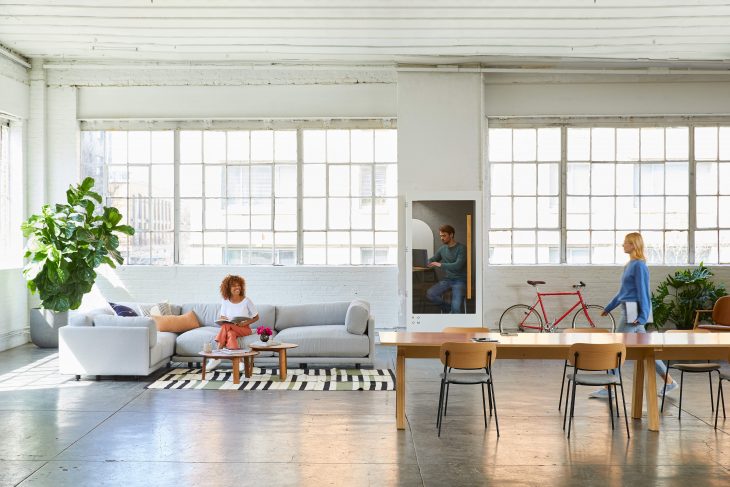
Do you measure the cost savings generated by environmentally appropriate solutions?
Using recycled materials actually does not decrease the cost in our case. We measure the cost savings to the environment rather than to the bottom line. Our meticulous design and engineering process allowed us to merge function, aesthetics, and sustainability while keeping the product affordable.
What do you think is the greatest benefit that your company receives because of the adoption of increased sustainability solutions?
ROOM was built on the foundation of making room for a better workplace. To do so, we need to make more room for people, and our commitment to preserving the environment is one of the many ways we’re doing just that. From the choice of materials used in our products, to our own in-office sustainable initiatives, we can truthfully state that we’re making a difference. Knowing that our clients and partners who use our product continue that mission and share with their respective communities, and our ROOM teammates carry their socially conscious torches around the clock, is the greatest benefit we could hope for.
What sustainable practices does your company participate in, in relation to overall community efforts?
Overall, we are dedicated to lessening our impact. We have recycling receptacles in nearly every corner of our office. Instead of single-use plastic cups, plates and silverware, we use actual dishes and cutlery. We share an espresso machine to encourage less frequent use of single-use coffee cups from the outside, and we always give preference to vendors who are sustainable. In fact, when we designed our team gear and apparel, we specifically chose brands that are WRAP (Worldwide Responsible Apparel Production) certified.
When we interact with clients, we carry cotton tote bags for parts and tools. We try to be thoughtful with our gifts leveraging recyclable handwritten notes and reusable water bottles. We clean all of our booths using cloths instead of paper towels and personally take out packaging to the recycling for our clients when we help with their booth assembly.
Being sustainable and socially conscious is a habit at ROOM. We know we are the choices we make, and at ROOM, we’ve chosen to make room for the future.
Skender
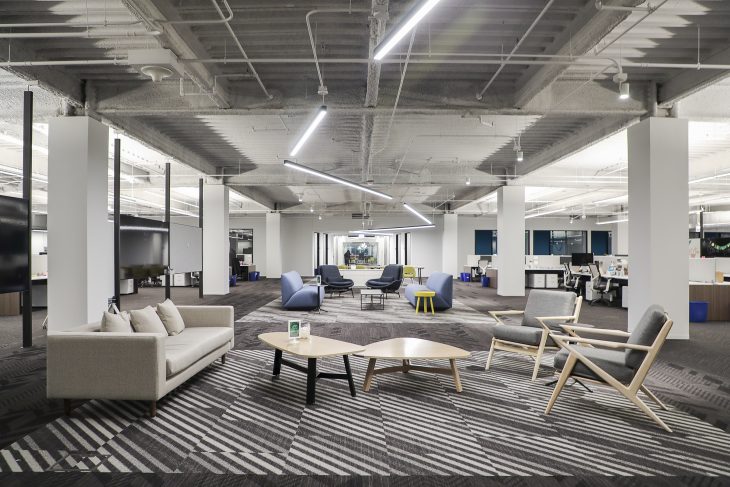
Check out some of our recent project profiles from Skender: Sprout Social, Wilson Sporting Goods, Brookfield Properties Retail Group.
What do you think is the most significant contribution to your company’s sustainability efforts?
Partnerships: Building true partnerships based on trust, transparency, and communication are essential to the way we do business. Shoulder to shoulder, we stand with each other in the face of any obstacle because when one succeeds, we all succeed. Forging true partnerships built on a foundation of respect, clear communication and open-mindedness cultivate an environment that encourages creative thinking and the sharing of ideas.
How many of your efforts are driven by employee requests/demands?
Sustainable design, manufacturing, and construction lead to a healthier, more productive environment with numerous benefits for the client and partners. As such, we incorporate environmentally friendly and smart green practices into every project regardless of certification. This includes our lean, integrated approach, our material and fixture options, our indoor air quality, our carbon offsetting and waste elimination.
Do you measure the cost savings generated by environmentally appropriate solutions?
Our lean, value-optimized approach to building is also how we do business. We believe effectiveness and efficiency are about eliminating barriers and seamless process. The benefit to our approach is a reduction in overall cost, more decision making power, accelerated schedules, transparent pricing and reliable budgets, less risk and fewer mistakes, and improved collaboration.

What do you think is the greatest benefit that your company receives because of the adoption of increased sustainability solutions?
At Skender, we deliver a refreshingly innovative approach with tangible benefits. Our tech-infused, integrated model and industry-leading lean methodology help us eliminate waste on all projects and processes. This passion, combined with our experience in all green building certifications, makes Skender one of the greenest builders in the business and we have earned more than two-dozen best-place-to-work awards over the last dozen years.
What sustainable practices does your company participate in, in relation to overall community efforts?
We started the Skender Foundation, a 501(c)(3) public foundation that believes all people should have access to resources and relationships that help them make good life decisions. Since its inception in 2012, Skender Foundation has raised more than $3.5 million for more than 300 charitable organizations. We do this through two annual events, an endowment, volunteer programs, and our Builders’ Board, a subcommittee of Skender Foundation comprised of young, driven professionals with a passion for helping others achieve more through relationships, education, and wellness.
Back in October 2017, Skender joined the U.S. Environmental Protection Agency’s Green Power Partnership. Skender is offsetting 100 percent of its annual Chicago office electricity use, or 250 thousand kilowatt-hours (kWh), with the purchase of green power via renewable energy certificates (RECs) from Renewable Choice Energy. As a Green Power Partner, Skender joins DePaul University, the Morton Arboretum, and a wide variety of leading organizations committed to leading their industries in the reduction of carbon emissions and the movement toward a cleaner, more sustainable energy future.



Thank you for sharing examples of how business are being more environmentally aware. I like how you mentioned that working in an office can be discouraging if you advocate for sustainability. In general, I think if a company partners with a type of environmental sustainability group it could help them make changes.